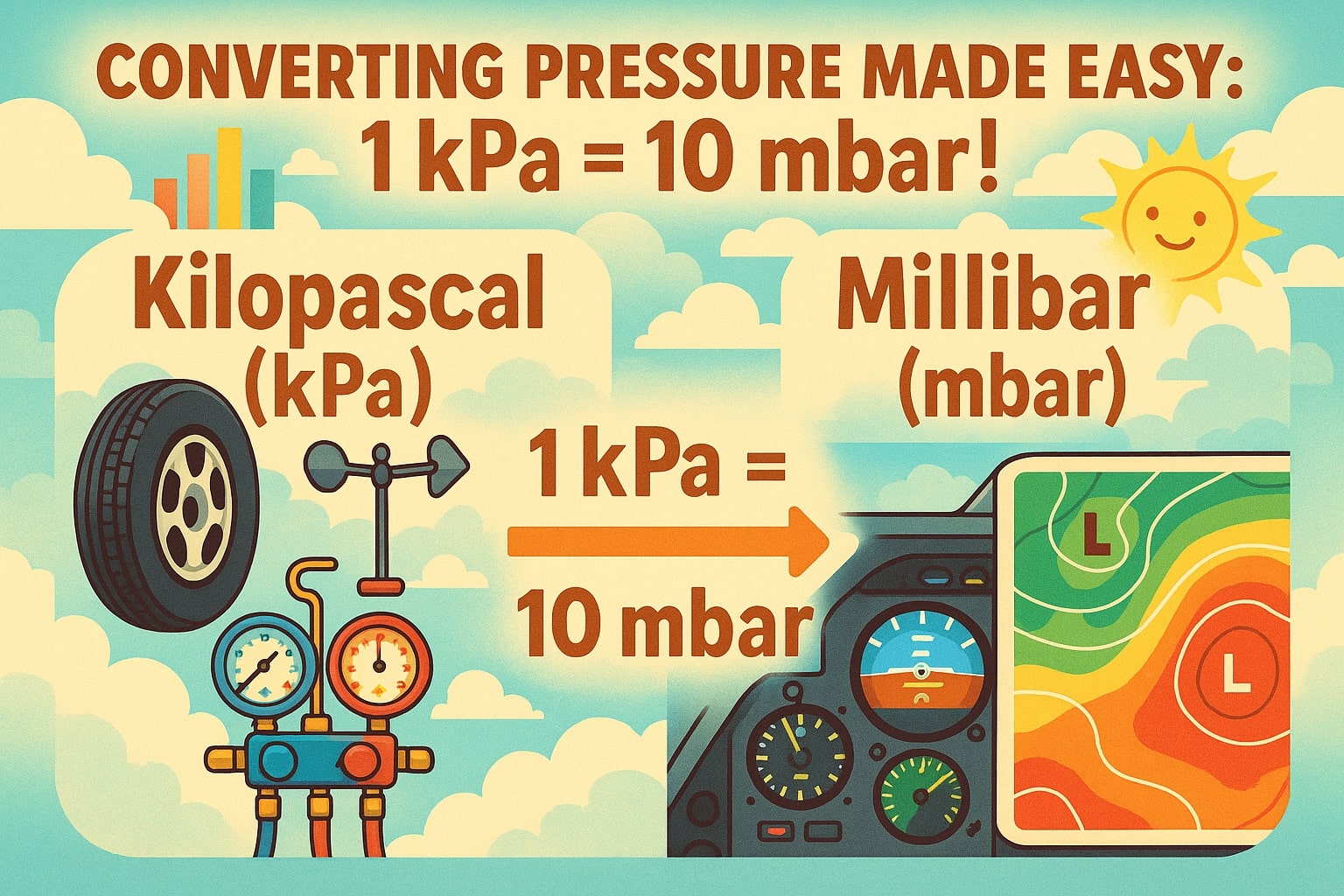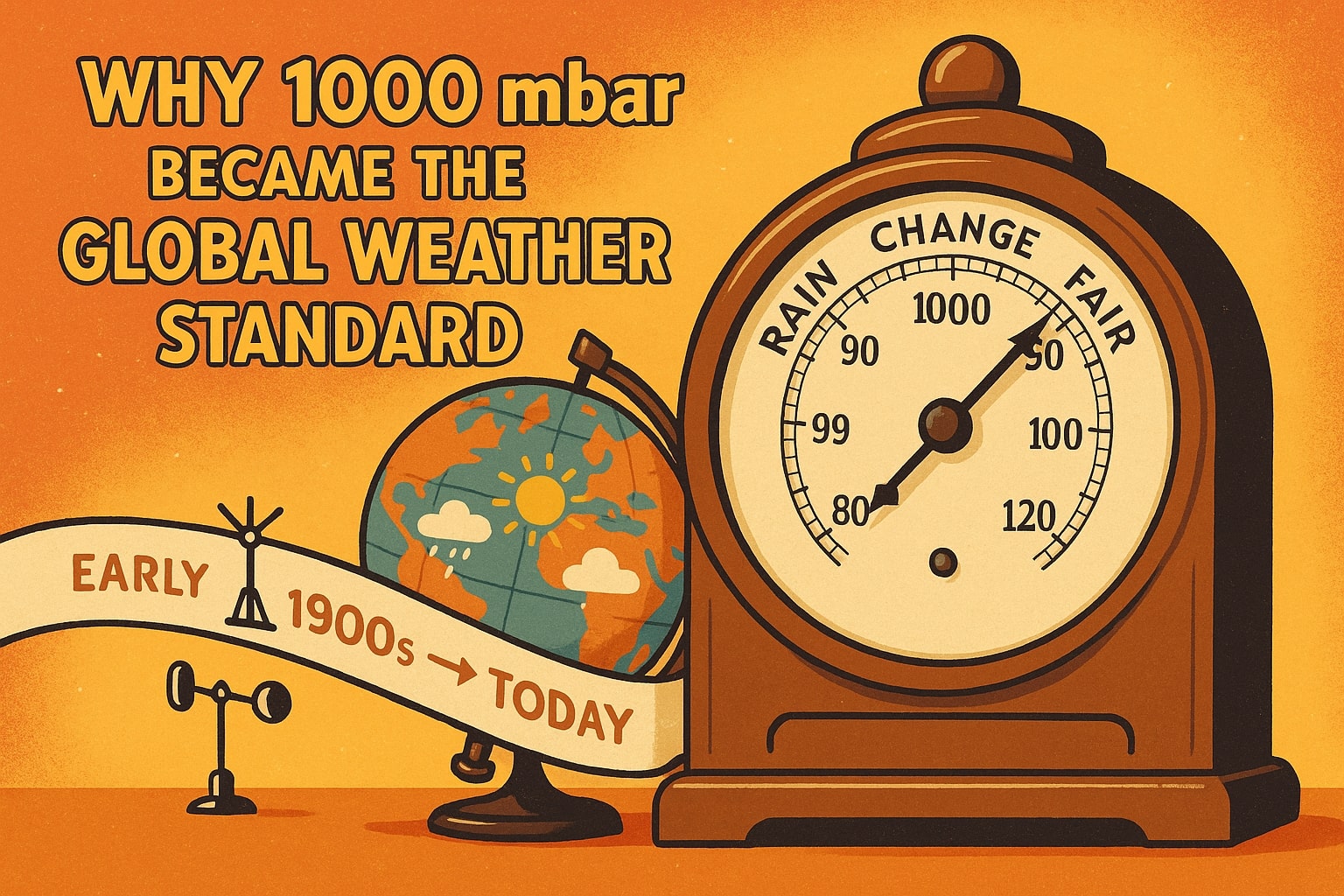Kilopascal to Millibar – How to convert kPa to mbar
Need to convert kilopascal to millibar? These two units measure pressure, but they’re used in different contexts. Kilopascals are a standard SI unit for a wide range of applications, while millibars are the go-to unit in meteorology and aviation. Converting between them is straightforward, and knowing how they relate makes it easier to interpret weather data, engineering specs, and international reports.

What is a kilopascal (kPa)?
A kilopascal equals 1,000 pascals, or the force of one kilonewton per square meter. It’s a versatile pressure unit used in:
-
Weather reports in metric countries, where atmospheric pressure at sea level is roughly 101.3 kPa.
-
Tire pressure specifications, often listed in kPa alongside psi.
-
Industrial and HVAC systems, where kilopascals are used to gauge moderate operating pressures.
Because it’s easy to work with, kPa has become one of the most commonly used SI units for pressure worldwide.
What is a millibar (mbar)?
A millibar equals 100 pascals, making it one-tenth of a kilopascal. While technically not an SI unit, it’s widely accepted and still standard in:
-
Meteorology, where atmospheric pressure is usually given in millibars (or hectopascals, which are equivalent).
-
Aviation, where altimeter settings and weather briefings often use mbar or hPa.
-
Oceanography and climatology, for pressure-related data logging.
One reason the millibar persists is its convenience — it aligns closely with typical atmospheric values, such as 1,013 mbar at sea level.
How to convert kilopascal to millibar
The relationship between these two units is direct:
1 kPa = 10 mbar
To convert:
Millibars (mbar) = Kilopascals (kPa) × 10
Example: If a storm system has a central pressure of 96.5 kPa:
96.5 × 10 = 965 mbar
For quick, accurate results, use our Pressure Converter or explore other Conversion tools for any pressure unit conversion.
Did you know?
-
Weather maps: Most international weather agencies plot pressure systems in millibars (or hPa) because these values neatly represent atmospheric pressure without huge numbers.
-
Hurricane benchmarks: Category 5 hurricanes often feature central pressures below 920 mbar — values that meteorologists closely monitor using millibar scales.
-
Aviation practice: Pilots worldwide use millibar-based settings when calibrating altimeters, often defaulting to 1,013 mbar (standard sea-level pressure) for flight levels.
-
Scientific overlap: While millibar isn’t an SI unit, it aligns perfectly with hectopascal (1 mbar = 1 hPa), which is fully metric — making data exchange seamless.
How Millibars Became a Meteorological Standard
In the early 20th century, weather services worldwide began using millibars to standardize atmospheric pressure reporting. According to the World Meteorological Organization’s historical archives, millibars were adopted because they gave convenient, easy-to-read values near 1,000 — a typical sea-level pressure.
Even as the SI system became dominant, millibars remained in use because 1 mbar equals 1 hPa, requiring no changes to instruments or historical datasets. This dual identity allows meteorologists to use the millibar scale while staying consistent with modern metric standards.

Converting for Clarity
Switching from kilopascal to millibar is as simple as multiplying by 10. Kilopascals serve as a standard SI measure across engineering and general reporting, while millibars remain indispensable in weather, aviation, and ocean science. Understanding both ensures you can read forecasts, technical documents, and scientific data without confusion.
For instant, precise results, try our Pressure Converter or explore other Conversion tools to make every pressure conversion fast and accurate.

